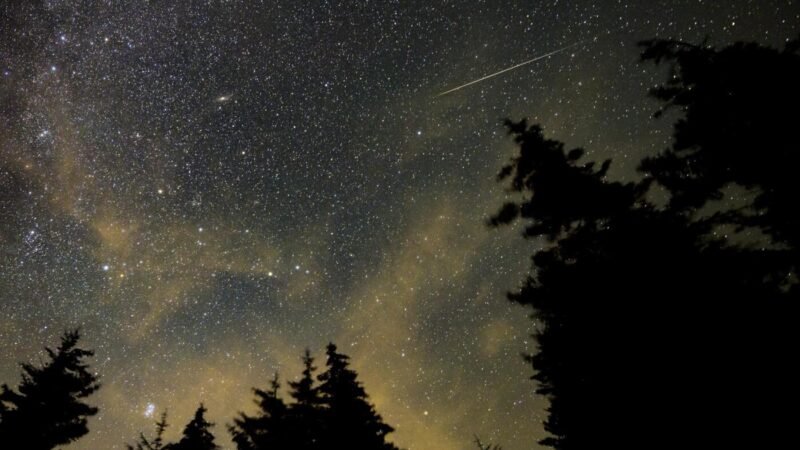Top Highlights
-
Best Viewing Opportunity: While the Perseid meteor shower peaks on August 12, it may be less visible due to a bright moon; the Southern Delta Aquariids and Alpha Capricornids, peaking on July 29-30, offer better viewing with less moonlight interference.
-
Meteor Shower Mechanics: Meteor showers are caused when Earth’s orbit intersects debris from comets and asteroids, creating bright flashes as small particles burn up in the atmosphere.
-
Optimal Viewing Conditions: For the best experience, viewers should find dark skies, turn off electronic screens, and focus on the southern part of the sky after midnight for maximum visibility.
- Future Predictions: The Perseids are still expected to produce bright meteors despite moonlight interference this year, with a predicted outburst of meteors anticipated in 2026 when conditions will be even more favorable.
Skywatchers Set Their Sights on Meteor Showers This Week
Summer nights invite many to gaze up and wish upon a shooting star. The Perseid meteor shower, typically the summer highlight, faces tough competition this year. A bright moon threatens to overshadow it when the Perseids peak on August 12. Astronomers warn that its glare may diminish visibility.
However, skywatchers can look forward to two lesser-known meteor showers peaking this week. The Southern Delta Aquariids and Alpha Capricornids reach their zenith from July 29 to July 30. Together, these showers might produce 20 to 30 meteors per hour.
Meteor showers occur when Earth passes through debris left by comets and asteroids. When tiny fragments enter the atmosphere, they burn up, creating bright flashes. Observers may witness streaks of light from bits as small as dust or sand.
For the best viewing, the early hours of the morning offer optimal conditions. Seek dark locations away from artificial light. Allow your eyes about 15 to 30 minutes to adjust. Avoid cellphones, as their glow affects night vision.
Position yourself to have clear southern sky views for the Southern Delta Aquariids. Although the Alpha Capricornids are less frequent, they sometimes produce slow, bright fireballs. Some observers might find that riveting.
If clouds obscure the sky on Tuesday, don’t worry. Meteor showers continue for days before and after their peak. This time of year features multiple overlapping meteor events, giving watchers several opportunities.
Despite the moon’s brightness, the Perseids could still surprise viewers. Known for their quantity and impressive brightness, they remain a strong contender for late-night excitement. Experts anticipate next year’s shower will be phenomenal, predicting an “outburst” of meteors.
Understanding these celestial events also aids in technology development. Satellites and space missions rely on accurate meteor shower predictions to protect against space debris. As scientists refine their forecasts, they improve safety measures for these technological advancements.
This summer offers a chance for stunning night-sky observations. Whether seeking occasional fireballs or the thrill of a meteor shower, the sky remains a canvas of wonders.
Expand Your Tech Knowledge
Dive deeper into the world of Cryptocurrency and its impact on global finance.
Discover archived knowledge and digital history on the Internet Archive.
SciV1

